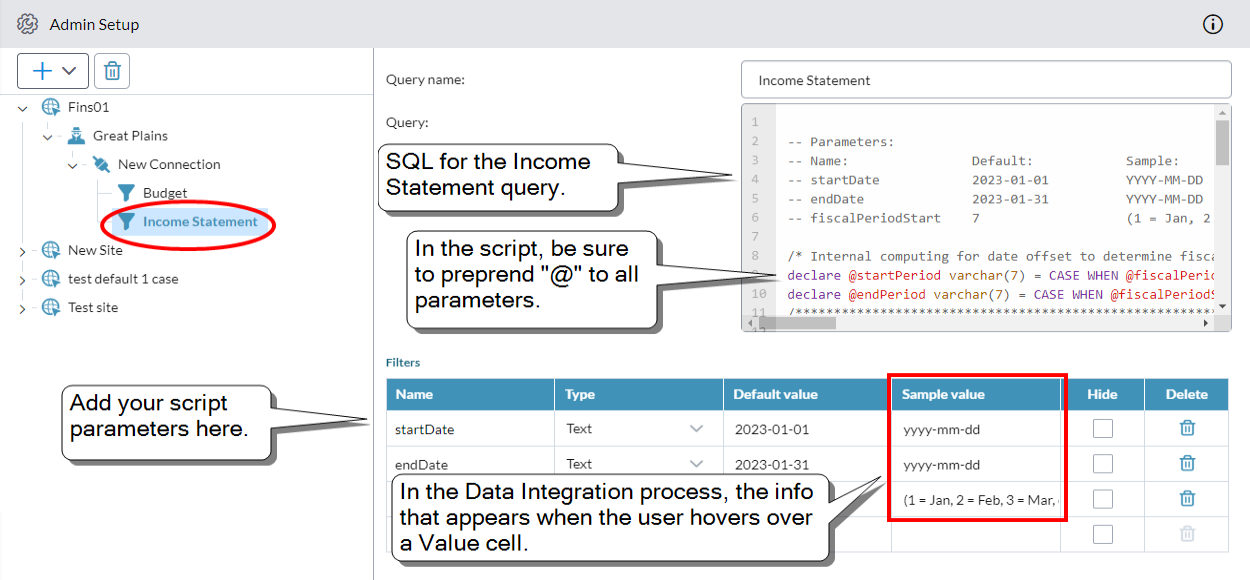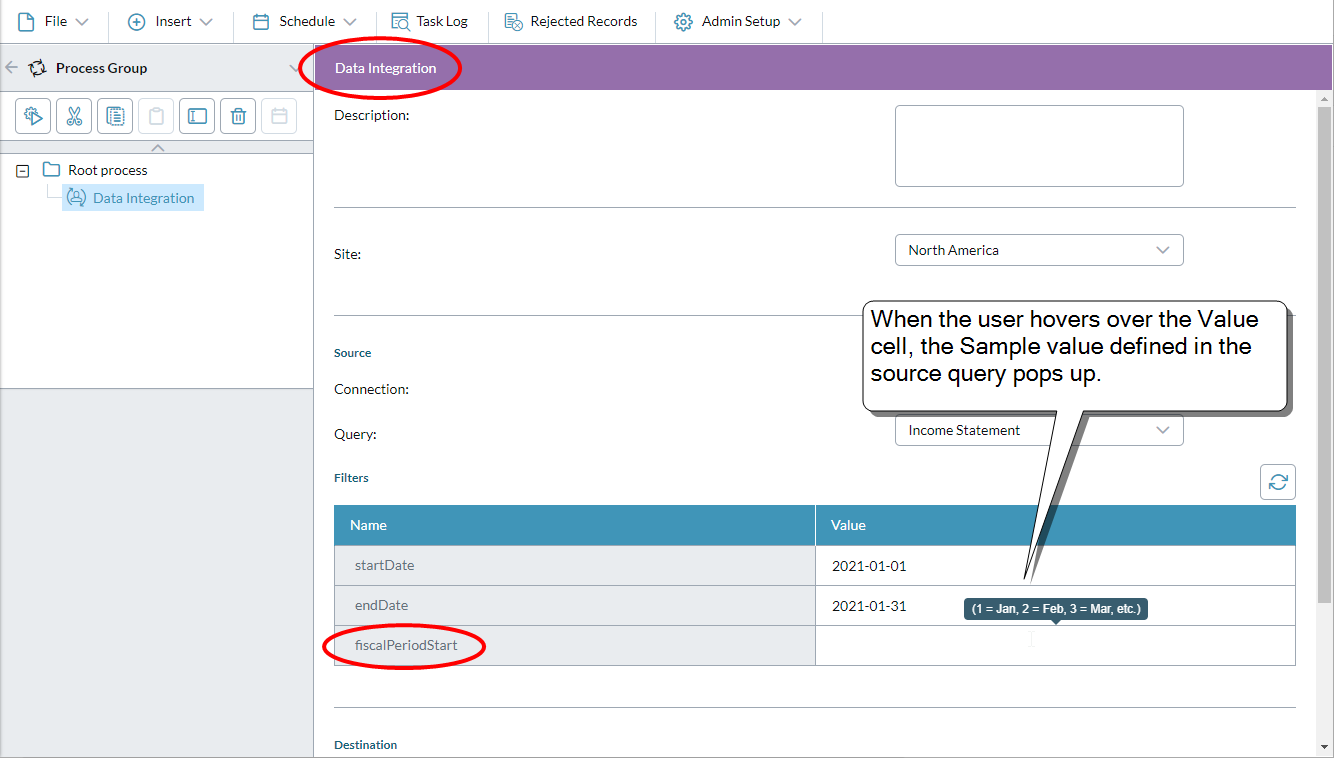ODBC/ODBC32 agent
The ODBC/ODBC32 agent is used only for on-premises deployments.
An ODBC/ODBC32 agent can be used as a source and can serve as a destination for:
- Excel
- MySQL
- ODBC/ODBC32
- PowerBI
- SQL Server
- Text
Requirements
If you want to use the ODBC agent to connect to your source data, on the Controller server:
-
Install the ODBC driver (64-bit) provided by your source system’s vendor.
-
Create a System DSN in ODBC Data Source (64-bit), configured using the source system’s vendor specifications.
Add a connection
To add a connection for an ODBC or ODBC32 agent:
- In the navigation panel, select Admin Setup.
- Select an ODBC or ODBC32 agent or peer connection, and click > Add Connection.
- Connection Name must be unique. Up to 40 characters.
- System DSN: Can use spaces and be up 32 characters, but none of the following: [ ] { } , ; ? * = ! @ \.
- UserID: (Optional) Up to 256 characters; no restrictions.
- Password: (Optional) Up to 256 characters; no restrictions.
- Click Save.
Add a query
- Select a SQL connection or peer query, and click > Add Query.
- Query Name must be unique. Up to 40 characters.
-
In Query, type or paste your ERP query.
Note: The SQL must be compatible with your ERP.
Example of a query with parameters:
Note: Within the body of your SQL script, you must preprend @ to all parameters. For example, startDate must appear as @startDate.
The same query viewed in the Data Integration process:
- If the query has parameters, add them to the Filters table:
Name: The parameter name. Up to 50 characters.
Tip: In the filter table, don't prepend "@" to the parameter names.
- Type: The parameter's data type (text or numeric). (For date values choose text.)
- Default value: What the user sees in the Data Integration process and can edit. Up to 50 characters.
- Sample value: What the user sees when hovering over the cell in the Data Integration process. Use it to show the expected input/format. Up to 50 characters.
- Hide: Turn on if you want to keep users of the Data Integration process from seeing the parameter, while using its Default value in the query.
- Click Save.

